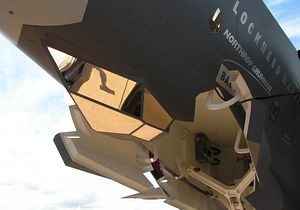The question has long vexed defense analysts, as the projected costs of fighters seem to expand even faster than those of other military hardware. Some of the reasons include the ever-increasing gulf between civilian and military technology, a gulf that demands extra specialization on the part of engineers, equipment, and workforce. Also, fighters (as opposed to interceptors, bombers, or attack aircraft) are literally designed to fight one another, making escalatory cycles particularly likely. Moreover, since modern fighters are generally expected to fulfill multiple roles (air superiority, plus attack, strategic bombing, and interception) packing mission capabilities into a single airframe naturally metastasizes costs.
And then there’s the (mildly) dirty part; in many cases, governments only pretend to care about the expense of their fighters. Money spent on cost overruns for F-35s doesn’t just disappear; it makes defense contractors wealthy and generates jobs across the country. Representatives from districts that produce expensive fighters have literally no incentive to hold costs in line. The same goes for more authoritarian systems in which different power brokers use military spending to favor specific communities and interest groups.
Export customers have stronger incentives to seek low costs, and opportunities for export can potentially drive costs down. But social factors also matter. An under-mentioned point in defense procurement debates is that the purchase of advanced fighter aircraft is often less about national defense than national identity. Both civilian and military leaders tend to resent the idea that neighbors and rivals will own and operate more capable, advanced, and expensive aircraft. Moreover, states don’t simply buy advanced fighters “off the shelf,” as advanced aircraft have historically required long term deals for training, maintenance, and spare parts. Buying a fighter means buying a political relationship.
But high end trends notwithstanding, there are some glimmers on the affordability front. While Brazil’s Gripen decision has been interpreted as a symbolic defeat for the United States, there are few decisions more practical than attempting to manage the expense of a massive modern fighter-purchase by picking the lowest cost option. Similarly, the decisions of Iraq and the Philippines to go low by acquiring the inexpensive South Korean T-50 imply that even (or perhaps especially) those customers with serious security concerns are willing to pursue affordable options. It will be especially interesting to see how the Textron Scorpion fares on the international market.
Moreover, the advent of 3D printing may well mean that customers will have the opportunity to carry out much needed maintenance and repairs without relying on the sellers as much as they have in the past. The days in which the Soviet Union could use MiG-23 airframes as a loss leader for jet engines, or in which the United States could use long-term maintenance agreements as a club to encourage additional purchases, are coming to an end.
Thus, there’s some evidence that we are seeing the emergence of a mature market for fighters in a multipolar world, which gives consumers more choices than they had during the Cold War, when procurement decisions often implied alliance commitments. Ironically, we may be approaching a world in which first-tier aerospace powers find themselves stuck with a dwindling number of hyper-expensive warplanes, while second-tier importers can take advantage of a smorgasbord of fighter options.

































